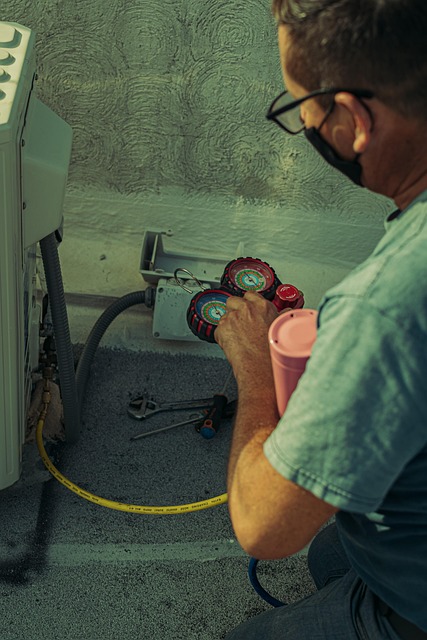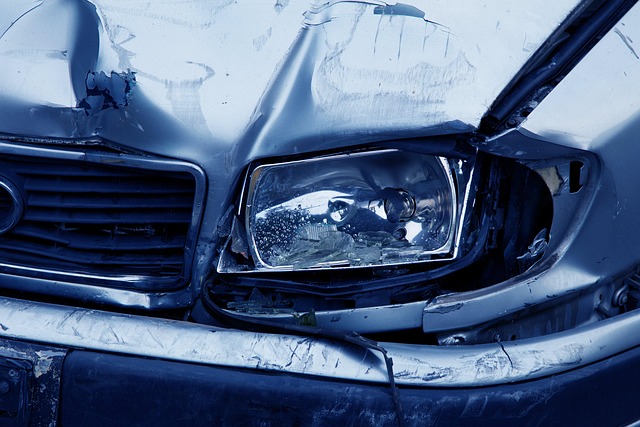Mastering Post-Repair Safety: Key Inspection Steps for Comprehensive Risk Assessment
Post-repair safety inspections are vital after any automotive repair, from dent removal to full rest…….
In the wake of an appliance or mechanical repair, ensuring the safety of the restored system is paramount. This critical process, known as post-repair safety inspection, involves a thorough evaluation to identify potential risks and ensure the product or equipment operates within established safety standards. The significance of this practice lies in its ability to mitigate hazards, prevent accidents, and protect users, making it an indispensable aspect of the maintenance industry. This article aims to provide an in-depth exploration of post-repair safety inspection, shedding light on its importance, methodologies, global impact, and future potential.
Post-repair safety inspection is a systematic process conducted after repairing or servicing a mechanical or electrical system to verify its operational safety. It involves multiple stages:
The concept of post-repair safety inspection has evolved over time, driven by increasing awareness of product safety and liability concerns. In the early 20th century, as industrialization picked up pace, so did the incidence of workplace accidents and product failures. This led to the establishment of safety standards and regulatory bodies worldwide, which emphasized the need for rigorous testing and inspection post-repair. Over the years, technological advancements have enhanced the tools and techniques used in these inspections, making them more efficient and comprehensive.
Post-repair safety inspection is a critical link in the chain of ensuring product quality and user safety. It serves multiple purposes:
Post-repair safety inspection is a global practice, with variations tailored to regional regulations and cultural norms. The World Health Organization (WHO) and International Organization for Standardization (ISO) provide guidelines that serve as a foundation for national and local standards worldwide. These international frameworks ensure consistency in safety practices while allowing for flexibility to accommodate diverse contexts.
The post-repair safety inspection market is influenced by several factors:
Investment in post-repair safety inspection is primarily focused on:
The economic impact of post-repair safety inspection is multifaceted:
Technological progress has significantly enhanced post-repair safety inspection:
The future holds immense potential for technological advancements in this field:
Post-repair safety inspection is governed by a web of policies and regulations designed to protect consumers and ensure product quality:
These policies and regulations have a profound impact on post-repair safety inspection:
Despite its importance, post-repair safety inspection faces several challenges:
Criticisms of post-repair safety inspection often center around potential bottlenecks and inefficiencies:
Toyota Motor Corporation has implemented a robust post-repair safety inspection system for its vehicles. After any repair or service, technicians perform a comprehensive 174-point safety check, covering everything from structural integrity to electrical systems. This meticulous process ensures that each vehicle meets Toyota’s stringent safety standards and the manufacturer’s warranty requirements. The company’s focus on thorough inspections has contributed to its reputation for reliable and safe vehicles.
Medtronic, a global medical technology company, has faced several product recalls due to design flaws and manufacturing issues. However, their rigorous post-repair safety inspection process played a pivotal role in minimizing risks. By implementing detailed testing protocols for each device after repair or modification, they identified potential problems early on. This proactive approach helped Medtronic avoid widespread crises and maintain consumer trust.
Boeing, the global aerospace manufacturer, conducts extensive post-repair safety inspections for its aircraft. These inspections include non-destructive testing (NDT) techniques to assess structural integrity without causing damage. By adhering to strict standards, Boeing ensures the safety and reliability of its planes, which is critical in the highly regulated aviation industry.
The future of post-repair safety inspection is filled with exciting possibilities:
To capitalize on these trends and ensure a competitive edge, organizations should:
Post-repair safety inspection is a critical component of modern maintenance and repair practices, ensuring that products and equipment are safe for use. This comprehensive analysis has highlighted its global impact, economic significance, technological advancements, policy frameworks, challenges, and future prospects. As the world becomes increasingly interconnected and technology advances, post-repair safety inspection will continue to evolve, playing a pivotal role in safeguarding users and maintaining high-quality standards worldwide.
Q: Why is post-repair safety inspection important?
A: It identifies potential hazards, ensures product quality, protects users, and reduces legal risks for manufacturers and repair shops.
Q: Who is responsible for conducting post-repair inspections?
A: This responsibility varies by industry and region. In many cases, trained technicians or specialized inspection teams handle it, while in others, original equipment manufacturers (OEMs) or certified repair facilities are tasked with the role.
Q: How do technological advancements improve post-repair safety inspection?
A: They automate processes, enhance data analysis, enable remote monitoring, and provide more efficient testing methods, ultimately increasing accuracy and speed.
Q: Are there international standards for post-repair safety inspection?
A: Yes, organizations like ISO and WHO provide guidelines and standards that serve as a global framework for safe practices. These standards ensure consistency while allowing for regional adaptations.
Q: What are some common challenges faced during post-repair inspections?
A: Skill shortages, cost considerations, technological integration, and harmonizing global standards are among the main challenges, but strategies exist to address each.

Post-repair safety inspections are vital after any automotive repair, from dent removal to full rest…….

Post-repair safety inspection is a vital process ensuring vehicle safety and compliance with regulat…….

Post-repair safety inspection is a vital quality assurance process for automotive body shops, ensuri…….

Post-repair safety inspections are crucial for preparing vehicles, especially those with airbags, fo…….

Post-repair safety inspections are crucial for ensuring vehicle integrity and safety after collision…….

Post-repair safety inspections are crucial for ensuring vehicles are safe to operate after repairs o…….

Post-repair safety inspections are critical for auto repair services, ensuring vehicles meet road sa…….